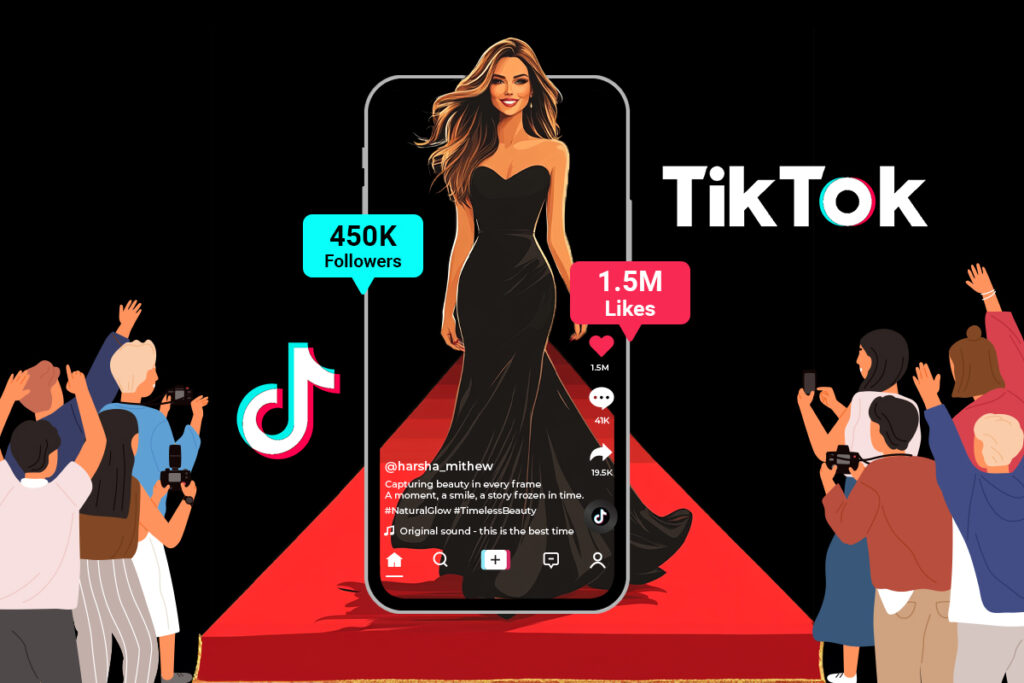Steering TikTok influencer collaboration costs effectively begins with analyzing influencer pricing. Consider follower count and engagement rates, as these metrics substantially impact costs and potential ROI. Second, negotiation of collaboration terms is essential. Establish exclusivity agreements to protect brand interests and define clear deliverables to prevent misunderstandings. Third, align costs with campaign objectives to maximize value. Leverage data-driven insights to dynamically adjust strategies and negotiate performance bonuses tied to engagement metrics for enhanced content quality. A well-structured partnership fosters mutual benefit. By exploring these strategies, one can access the potential for streamlined, cost-effective influencer collaborations.
Key Takeaways
- Evaluate influencer’s follower count and engagement rates to determine appropriate compensation structure.
- Consider the complexity of content required when negotiating fees with influencers.
- Analyze audience demographics and niche to align collaboration costs with industry standards.
- Incorporate performance-based bonuses to motivate influencers for better engagement and content quality.
- Maintain clear communication on deliverables, timelines, and expectations to optimize collaboration costs.
Analyze Influencer Pricing
Influencer pricing on TikTok is a multifaceted aspect that requires careful consideration of several variables to guarantee strategic investment. Primarily, the follower count plays a pivotal role, with nano-influencers charging between $4–$25 per post, while macro influencers can command fees ranging from $1,600–$2,400.
However, follower count alone is not the sole determinant; engagement rates are vital. Micro-influencers, with an average engagement rate of 4.84%, often deliver superior returns on investment, underscoring the need to evaluate engagement metrics alongside cost.
Content complexity is another significant factor influencing TikTok influencer pricing. More creative, effort-intensive posts can demand higher fees, with rates varying from $5 to $2,500 per post depending on the intricacy involved.
Additionally, audience demographics and influencer niche are pivotal. Industries such as tech and beauty often offer higher payments due to enhanced engagement and market demand, emphasizing the importance of niche audiences.
Payment structures also vary, with nano-influencers typically accepting performance-based payments or free products, whereas macro influencers usually prefer cash compensation.
Understanding these dynamics is essential for brands aiming to leverage TikTok influencers effectively, ensuring that investments align with desired outcomes.
Negotiate Collaboration Terms
To effectively negotiate collaboration terms with TikTok influencers, it’s imperative to adopt a thorough approach that aligns mutual interests and expectations. A strategic evaluation of the influencer’s reach, audience size, and content complexity is essential to establish a compensation structure that fits within your influencer marketing budget. This guarantees that both parties are satisfied with the terms and that the collaboration is mutually beneficial.
Exclusivity agreements are critical to safeguarding your brand’s interests by preventing influencers from promoting competing brands during and after the campaign. This enhances the value of the partnership and provides clarity on brand alignment.
Clearly defined deliverables—such as the number of posts, timelines, and performance metrics—are necessary to mitigate misunderstandings and promote accountability. Incorporating performance bonuses for exceeding engagement levels or achieving specific sales conversions can further incentivize influencers, encouraging them to produce high-quality content that benefits your campaign.
Maximize Campaign Value
Maximizing campaign value in TikTok influencer collaborations requires a judicious blend of strategic planning and data-driven decision-making. A significant starting point is understanding that collaboration costs should be aligned with the influencer’s audience reach, engagement rates, and content complexity.
For instance, while nano-influencers may charge as little as $4, mega-influencers can demand up to $2,400 per post. This base cost structure allows marketers to effectively budget based on campaign goals.
To maximize overall effectiveness, it’s imperative to negotiate terms that include performance bonuses tied to specific engagement metrics. This incentivizes TikTok influencers to enhance the quality and impact of their content, thereby improving the return on investment.
Additionally, selecting the appropriate ad format based on campaign goals is essential, as different formats have varying costs and effectiveness in reaching target audiences.
Real-time adjustments using data-driven insights can further optimize engagement. By monitoring engagement rates and other key performance indicators, marketers can adjust strategies dynamically to guarantee objectives are met.
Clear communication about expectations, deliverables, and timelines is critical to prevent misunderstandings and foster a successful partnership. This strategic approach guarantees that the collaboration is not only cost-effective but also highly impactful.
Frequently Asked Questions
How Much Do Tiktok Influencers Charge?
TikTok influencer pricing strategies are influenced by engagement rate importance, niche market factors, and audience demographics impact. Aligning campaign goals with content quality evaluation, influencer experience level, platform growth trends, seasonal pricing variations, and negotiation tactics is essential.
How Do I Decide How Much to Pay an Influencer?
Deciding influencer payment involves evaluating audience engagement, content quality, and influencer reach within niche relevance. Align campaign goals and brand identity, employing strategic negotiation strategies, flexible payment models, and performance metrics within contract terms to guarantee successful collaboration.
How Much Do Tiktok Influencers Charge per Post in the UK?
TikTok influencer charges in the UK reflect pricing trends influenced by follower count correlation, audience engagement rates, and influencer niche impact. Post format variations, content quality considerations, seasonal pricing strategies, and campaign duration effects further dictate market demand fluctuations.
How Much Should I Be Charging for a Tiktok Post?
Determining TikTok post pricing involves analyzing audience engagement metrics, content quality, and niche market factors. Consider influencer experience, follower count impact, and brand alignment. Align with campaign goals, employing negotiation tactics and understanding platform algorithm influences.
Conclusion
In summary, effectively maneuvering TikTok influencer collaboration costs requires a strategic approach that includes analyzing influencer pricing, negotiating favorable collaboration terms, and maximizing campaign value. By critically evaluating pricing structures, brands can make informed decisions that align with their budgetary constraints and marketing goals. Negotiation plays an essential role in establishing mutually beneficial agreements, while focusing on maximizing value guarantees a high return on investment. Ultimately, a thorough understanding of these factors can lead to successful influencer partnerships and enhanced brand visibility.




